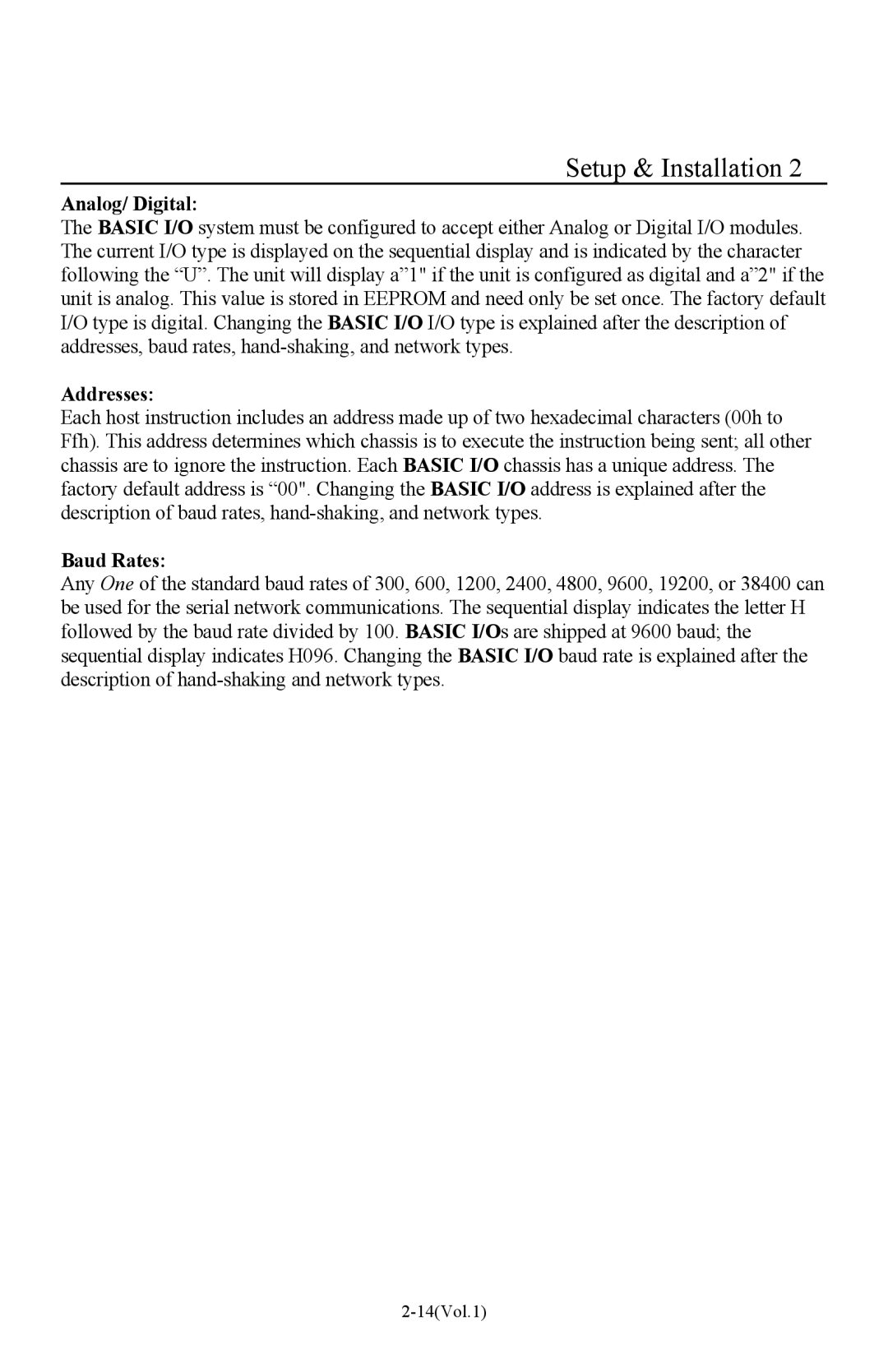Setup & Installation 2
Analog/ Digital:
The BASIC I/O system must be configured to accept either Analog or Digital I/O modules. The current I/O type is displayed on the sequential display and is indicated by the character following the “U”. The unit will display a”1" if the unit is configured as digital and a”2" if the unit is analog. This value is stored in EEPROM and need only be set once. The factory default I/O type is digital. Changing the BASIC I/O I/O type is explained after the description of addresses, baud rates,
Addresses:
Each host instruction includes an address made up of two hexadecimal characters (00h to Ffh). This address determines which chassis is to execute the instruction being sent; all other chassis are to ignore the instruction. Each BASIC I/O chassis has a unique address. The factory default address is “00". Changing the BASIC I/O address is explained after the description of baud rates,
Baud Rates:
Any One of the standard baud rates of 300, 600, 1200, 2400, 4800, 9600, 19200, or 38400 can be used for the serial network communications. The sequential display indicates the letter H followed by the baud rate divided by 100. BASIC I/Os are shipped at 9600 baud; the sequential display indicates H096. Changing the BASIC I/O baud rate is explained after the description of
